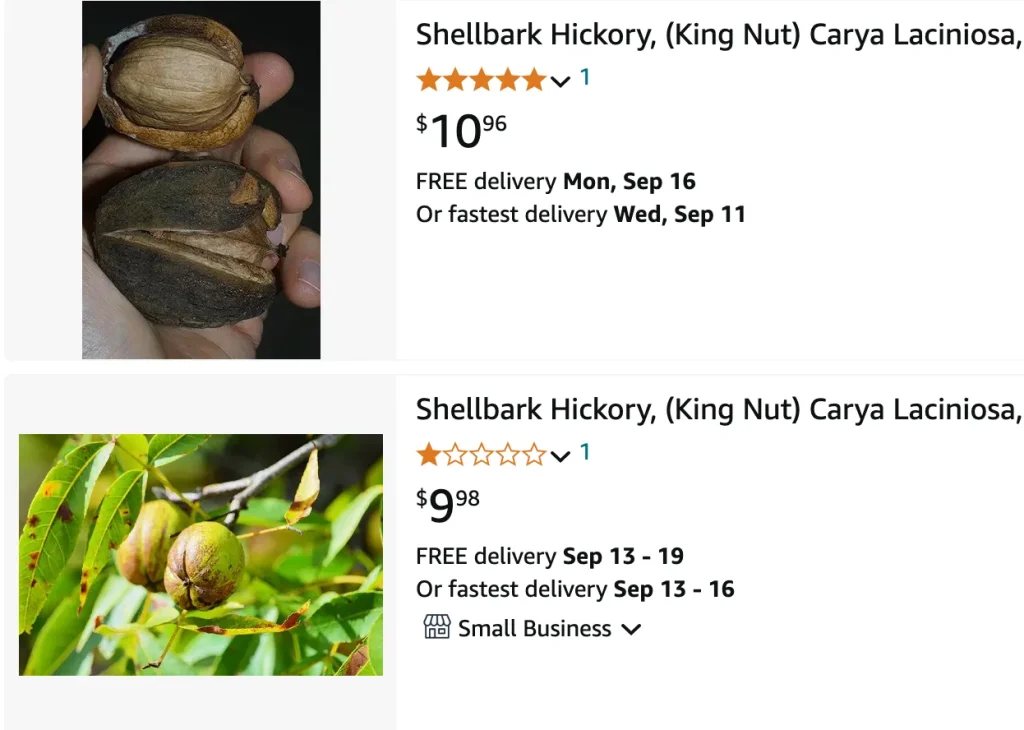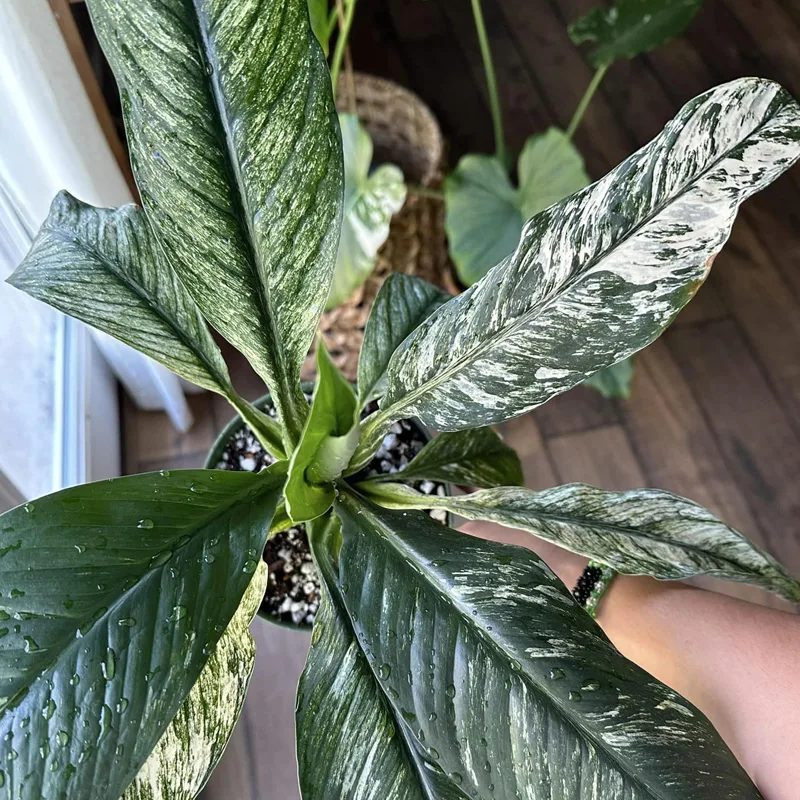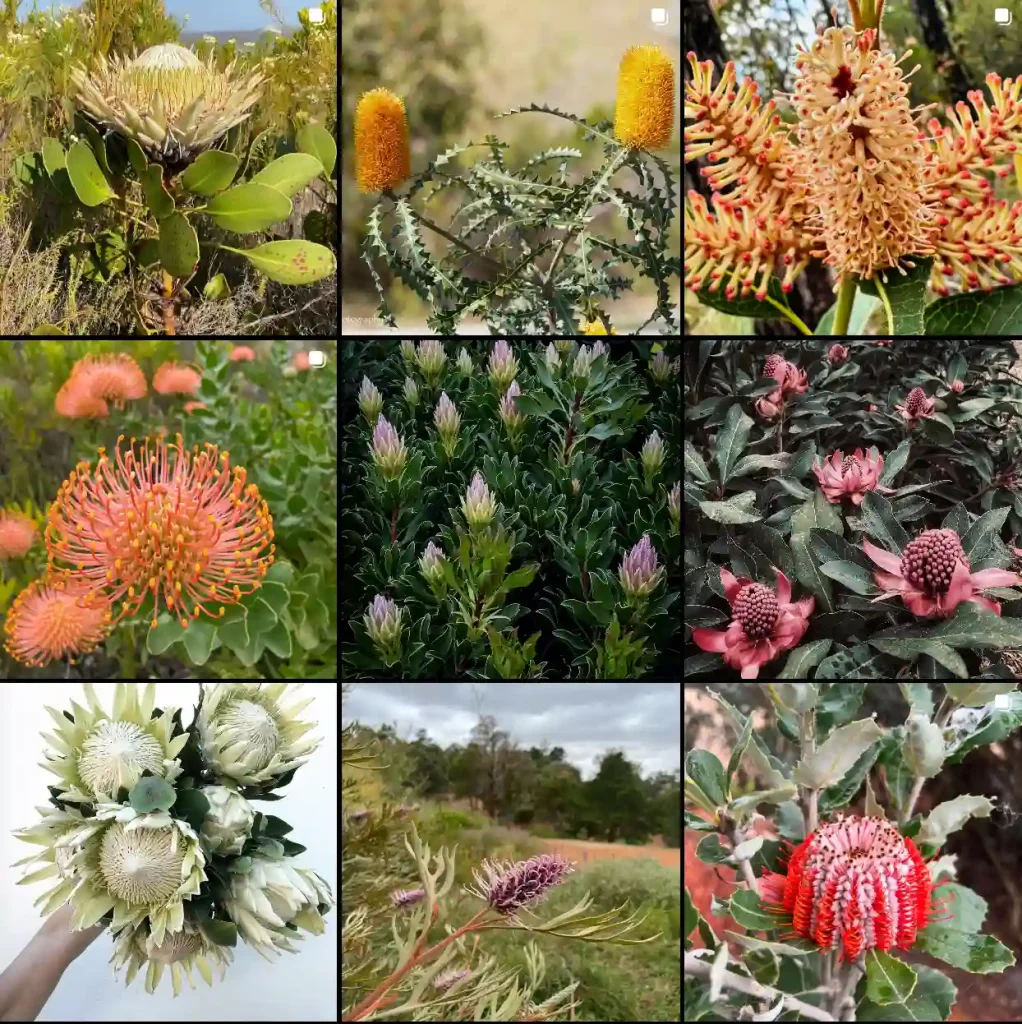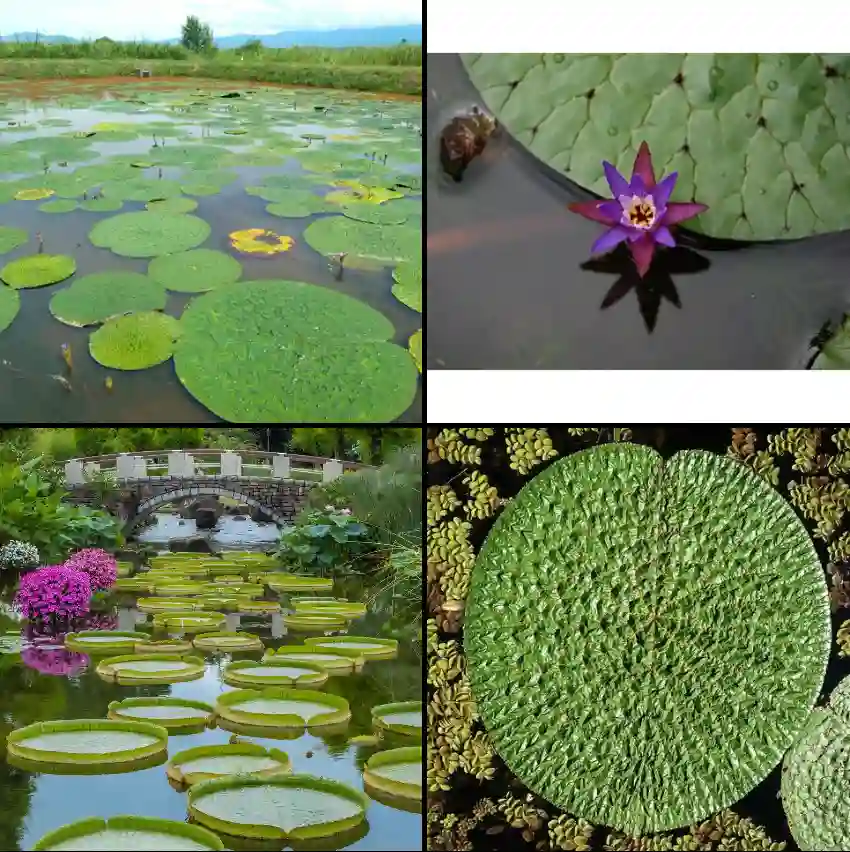
What is Carya Laciniosa?
Carya Laciniosa, or Shellbark Hickory, is a deciduous tree native to North America. It’s known for its large nuts, sturdy wood, and unique peeling bark. This tree can grow up to 80 feet tall with a straight trunk, making it one of the tallest hickories. Its name comes from the characteristic shaggy bark that tends to peel in large strips, especially as the tree matures.
The nuts of the Shellbark Hickory are highly valued by wildlife and humans alike, with their sweet, rich flavor. This tree is typically found in moist bottomlands, making it well-suited for areas with consistent moisture, though it can adapt to drier soils over time.
28 Species in Genus Carya
Carya Laciniosa vs Carya Ovata: What’s the Difference?
The two species often get confused due to their similar appearance, but there are a few key differences between Carya Laciniosa (Shellbark Hickory) and Carya Ovata (Shagbark Hickory):
- Size of the nuts: Shellbark Hickory produces larger nuts than Shagbark Hickory, which can make it a preferred choice for nut harvesters.
- Bark texture: While both trees have peeling bark, the strips on Carya Laciniosa are longer and broader, giving the tree a more dramatic appearance compared to the thinner strips of Carya Ovata.
- Leaf count: Carya Laciniosa typically has 7 to 9 leaflets per compound leaf, whereas Carya Ovata generally has 5 to 7.
- Preferred habitat: While both species thrive in similar environments, Shellbark Hickory is more commonly found in wetter soils, while Shagbark Hickory can tolerate drier, rocky areas.
How to Care for Carya Laciniosa?
Caring for Carya Laciniosa can be straightforward if its natural conditions are replicated. Here are a few pointers based on my experiences:
- Watering: These trees prefer moist, well-draining soils. If you’re planting it in your garden, ensure the soil doesn’t dry out completely, especially in its early years. Once established, it can handle drier conditions better.
- Sunlight: Shellbark Hickory loves full sun, so make sure to plant it in a location where it receives at least six hours of direct sunlight each day.
- Soil: Though it prefers rich, loamy soil, it can adapt to different types, as long as there’s adequate moisture.
- Pruning: Minimal pruning is required. Only prune dead or damaged branches, preferably in late winter before new growth begins.
How to Propagate Carya Laciniosa?
Propagating Carya Laciniosa from seed can be a rewarding, though time-consuming, process. The seeds (nuts) require a period of cold stratification to break dormancy. Here’s how I’ve had success with propagation:
- Collect the nuts in the fall, making sure they are mature and free of damage.
- Stratify the nuts by placing them in a moist medium (like sand or peat moss) in a refrigerator for about 90 to 120 days.
- Plant the seeds in spring once the stratification period is complete, in well-drained soil, and ensure the area remains moist.
Be patient, as it can take a couple of years for seedlings to become strong enough for transplanting.
Can You Grow Carya Laciniosa Indoors?
Growing Carya Laciniosa indoors is not practical due to its size. This tree grows large, both in height and root system, so it’s best suited for outdoor planting in a spacious area. However, if you’re determined to start from a seed, you could plant it in a container for its first few years before transplanting it outdoors.
Is Carya Laciniosa Toxic?
Carya Laciniosa is not toxic to humans or pets. In fact, the nuts are edible and highly nutritious, rich in protein and fats. However, they can be difficult to crack open, which is something to keep in mind if you’re harvesting them.
Benefits of Carya Laciniosa
There are several benefits to having Carya Laciniosa in your landscape:
- Wildlife value: The nuts provide food for squirrels, birds, and other wildlife, contributing to biodiversity.
- Timber: The wood is strong and durable, often used for making tool handles, furniture, and flooring.
- Shade: Its large canopy makes it a great shade tree for large landscapes.
- Nut production: While it takes several years for the tree to begin producing nuts, once it does, the yield can be substantial.
Common Problems with Carya Laciniosa
Like many hardwoods, Carya Laciniosa can be susceptible to pests and diseases:
- Hickory bark beetles: These can attack weakened trees, causing damage to the bark and potentially leading to tree death.
- Fungal diseases: Leaf spots and powdery mildew are common issues, though they rarely cause serious damage.
- Deer: In certain areas, deer may browse on young trees, so consider protecting them if you live in a region with a high deer population.
What to Plant with Carya Laciniosa?
Since Carya Laciniosa is a large tree with a wide canopy, it’s best to plant it with other shade-tolerant species. Some good companions include:
- Ferns: Their lush, green foliage thrives in the partial shade beneath the hickory canopy.
- Hostas: These plants also do well in the dappled shade provided by Carya Laciniosa.
- Understory trees: Smaller trees like dogwoods or redbuds can coexist well with Shellbark Hickory in larger landscapes.
Carya Laciniosa is a remarkable tree that can thrive in the right conditions, offering beauty, shade, and nuts for many years. Understanding its characteristics, care requirements, and benefits ensures that this tree remains a valuable part of any landscape.
If i die, water my plants!



